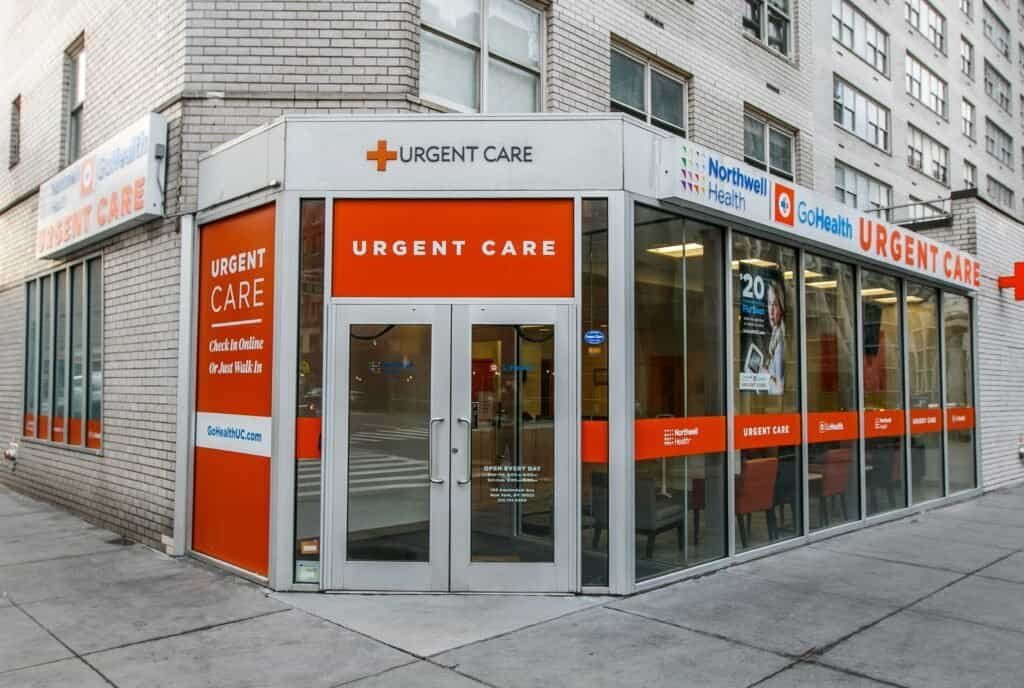
In today’s fast-paced world, knowing where to turn for medical care can feel overwhelming, especially when you’re not feeling your best. With the rise of telehealth, the options have expanded, but so have the questions: Should I go to the emergency room? Is urgent care enough? Or can I handle this with a telehealth visit? Understanding the differences between emergency and urgent care—and how telehealth fits into the picture—is crucial for making informed decisions about your health. This article explores these distinctions, offering practical guidance to help you navigate emergency and urgent care in the telehealth era.
What is Emergency Care?

Emergency care is designed for life-threatening situations where every second counts. These are conditions where delaying treatment could lead to serious harm or death. Emergency rooms (ERs), typically located within hospitals, are equipped with advanced technology and staffed by specialists, including emergency medicine physicians, who are available 24/7 to handle the most critical cases. ERs prioritize patients based on the severity of their condition, ensuring that those in dire need receive immediate attention.
Examples of Emergency Conditions
- Chest pain or symptoms of a heart attack
- Difficulty breathing or severe asthma attacks
- Severe injuries, such as those from car accidents
- Heavy bleeding that doesn’t stop
- Head injuries with loss of consciousness
- Strokes (e.g., sudden weakness, confusion, or difficulty speaking)
- Severe allergic reactions
- High fever in infants or young children
If you or a loved one experiences any of these symptoms, call 911 or head to the nearest ER immediately. These situations require hands-on intervention, advanced diagnostics, or surgical capabilities that only an ER can provide.
What is Urgent Care?

Urgent care is for medical issues that need prompt attention but are not life-threatening. These are conditions that can’t wait for a regular doctor’s appointment but don’t require the full resources of an ER. Urgent care centers are designed to provide quick, convenient care, often with shorter wait times and lower costs than ERs. They typically operate during evenings, weekends, and holidays, making them a great option when your primary care provider isn’t available.
Examples of Urgent Care Conditions
- Minor fractures or sprains
- Cuts that may need stitches
- Flu or cold symptoms
- Sinus infections or earaches
- Urinary tract infections
- Minor burns or rashes
- Mild to moderate allergic reactions
Urgent care centers can perform basic diagnostics, like X-rays or lab tests, and handle minor procedures, making them ideal for these types of issues.
The Role of Telehealth in Urgent and Emergency Care
Telehealth has transformed how we access medical care, particularly for urgent care needs. By connecting patients with healthcare providers via video or phone, telehealth offers a convenient, cost-effective way to address non-life-threatening conditions from the comfort of home. It’s especially useful for minor illnesses, follow-up care, or situations where you’re unsure if an in-person visit is necessary.
Telehealth in Urgent Care

For many urgent care scenarios, telehealth is a perfect fit. Providers can assess symptoms, provide diagnoses, and prescribe medications (except controlled substances in some cases) without requiring an in-person visit. Telehealth urgent care is available through platforms like Teladoc Health or MinuteClinic Virtual Care, often with 24/7 access or extended hours.
Common Uses of Telehealth Urgent Care
- Diagnosing and treating minor illnesses (e.g., colds, flu, sinus infections)
- Managing skin conditions like rashes or minor burns
- Addressing urinary tract infections or conjunctivitis (pink eye)
- Providing follow-up care for chronic conditions
- Refilling prescriptions
- Offering mental health support for non-emergency concerns
Telehealth is particularly valuable during flu season or pandemics, as it reduces exposure to germs. It’s also a lifeline for people in rural areas or those with mobility challenges, providing access to care that might otherwise be out of reach.
Telehealth in Emergency Care
While telehealth is not a substitute for in-person emergency care, it plays a supportive role in certain scenarios. For example:
- Tele-triage: A provider can assess symptoms remotely to determine if an ER visit is necessary or if the issue can be managed at home or through urgent care. This is particularly helpful for patients unsure about the severity of their condition.
- Follow-up Care: After an ER visit, telehealth can be used for follow-up consultations to monitor recovery or adjust treatment plans.
- Specialist Consultations: In rural or remote hospitals, telehealth connects local providers with specialists at larger medical centers, ensuring expert guidance for complex cases.
However, for true emergencies requiring immediate physical intervention—like setting a broken bone or performing surgery—telehealth cannot replace an ER visit. As noted by Telehealth.HHS.gov, telehealth can provide quick access to care but is not designed for life-threatening situations.
Benefits of Telehealth in the Telehealth Era
Telehealth has brought significant advantages to urgent care, making it a cornerstone of modern healthcare. Here are some key benefits:
- Convenience: You can consult a provider from home, saving time and avoiding the hassle of travel.
- Cost Savings: Telehealth visits are often less expensive than in-person urgent care or ER visits. For example, a virtual urgent care visit with Hamilton Telehealth costs a flat $89 for self-pay patients, compared to ER visits that can cost two to three times more.
- Reduced Exposure: Staying home for a telehealth visit minimizes the risk of catching or spreading illnesses, especially during contagious outbreaks.
- Accessibility: Telehealth makes care available to those in remote areas or with limited mobility, bridging gaps in healthcare access.
When to Choose Each Option
Choosing the right care option depends on the severity of your condition. Here’s a quick guide to help you decide:
| Condition | Telehealth Urgent Care | In-Person Urgent Care | Emergency Room |
| Cold/Flu Symptoms | Yes | Yes, if testing needed | No |
| Minor Cuts/Burns | Yes | Yes, if stitches needed | No |
| Sprains/Minor Fractures | No | Yes | Yes, if severe |
| Chest Pain | No | No | Yes |
| Difficulty Breathing | No | No | Yes |
| High Fever in Infants | No | No | Yes |
| Prescription Refills | Yes | Yes | No |
When to Use Telehealth Urgent Care
Telehealth is ideal for non-emergency issues that don’t require physical exams or procedures. If you’re dealing with a minor illness or need quick advice, platforms like NewYork-Presbyterian Virtual Urgent Care or Mass General Brigham Virtual Urgent Care can connect you with a provider within minutes.
When to Visit an In-Person Urgent Care

If your condition requires diagnostics like X-rays, lab tests, or minor procedures like stitches, an in-person urgent care center is the better choice.
When to Go to the ER
For life-threatening conditions, don’t hesitate to call 911 or go to the nearest ER. As emphasized by Mayo Clinic Health System, ERs are the best option for immediate, critical care.
Knowing When to Seek In-Person Care
While telehealth is incredibly useful, it’s not a one-size-fits-all solution. If your symptoms worsen during or after a telehealth visit, or if your provider recommends in-person care, follow their guidance. Trust your instincts—if something feels like an emergency, it’s better to err on the side of caution and seek ER care. For example, if a telehealth provider suspects a condition requiring further testing, they may refer you to an urgent care center or ER, as noted by Yale New Haven Health.
Conclusion
In the telehealth era, navigating emergency and urgent care is about understanding your options and choosing wisely. Telehealth has made urgent care more accessible, convenient, and cost-effective, allowing you to address minor health issues from home. However, for life-threatening emergencies, the ER remains the go-to solution. By knowing the differences between these care options and leveraging telehealth when appropriate, you can ensure you get the right care at the right time, all while taking advantage of the latest advancements in healthcare technology.
Feeling under the weather? Book a virtual appointment with us today for fast, convenient care.
You might also like: The Evolution of Online Urgent Care
